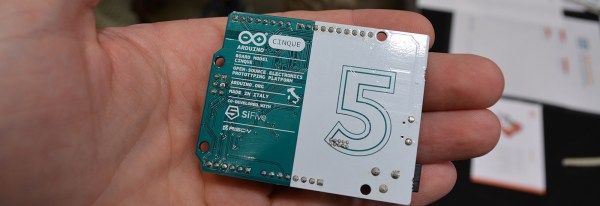Early this year, the world of electronics saw something amazing. The RISC-V, the first Open Source microcontroller was implemented in silicon, and we got an Arduino-derived dev board in the form of the HiFive 1. The HiFive 1 is just a bit shy of mindblowing; it’s a very fast microcontroller that’s right up there with the Teensy when it comes to processing power. There’s support for the Arduino IDE, so all those fancy libraries are ready to go. That’s not to say there aren’t a few problems; it’s a relatively expensive board, and it does use the ubiquitous but somewhat unfortunate Arduino form factor.
In the past few months, SiFive, the folks behind the FE310 microcontroller inside the HiFive 1, have been working to get bare chips out on the market. Now, those trays of microcontrollers are being turned into newer, slightly more development-friendly boards. Meet the LoFive RISC-V. It’s a GroupGets crowdfunding campaign from [Michael Welling], and it takes all the openness from the HiFive 1 and the FE310 microcontroller and stuffs it into a cheap, easy-to-use board.
Like the HiFive 1, the LoFive features the FE310 microcontroller and a 128 Mbit SPI flash. Unlike the HiFive 1, there’s not much else on this board. There’s a few voltage regulators, a crystal, some caps, and a button on an interrupt pin. If you’re looking for an Open Source microcontroller development board without a lot of cruft, here you go. This is a RISC-V microcontroller with the minimum amount of support circuitry.
The GroupGets campaign is offering up 1,000 of these little boards for $25 each plus shipping. If you’ve been looking for an excuse to play around with Open Source microcontrollers, this may be the best chance you’re going to get for a while.













